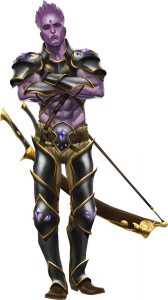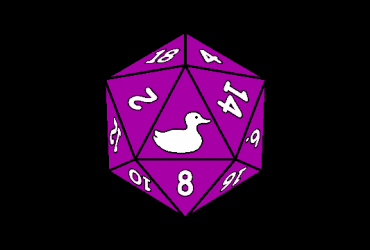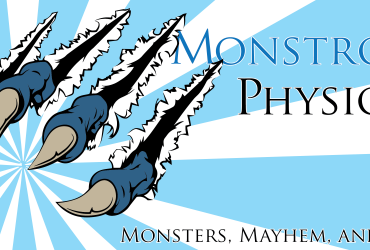I know I said I was going to write about creating monsters again, but I had the opportunity to hang out with the fine folks at the Pathfinder Society of Bloomington, Indiana this past weekend and I’d rather write about creating NPCs since it was a topic of discussion that came up more than once. The best part is knowing how to think about NPCs will also help you think about how to create fun monsters too.
Without NPCs to interact with, the PCs would wander from combat to puzzle to trap until they exhausted their resources and then the game would be over. No new equipment, no new information, no conversations to be had other than among PCs, no new leads on new dungeons, monsters, puzzles, or traps. Life as an adventurer would be very dull in a game without NPCs.
NPCs are not created equally
Some NPCs are villains, some NPCs are allies, however most NPCs are neutral individuals that just keep your world rolling along. There will come a point as the GM you will need to impart information, transact commerce, or initiate a quest with the use of an NPC. Depending on the situation, you may use the same NPC to perform these tasks or you may share the action around to the NPCs you have at hand. For example, the NPC that tends the general store may be nothing more than a name and a brief description, such as Master Jerrick Rorrisson, a jovial older man with a boisterous laugh and neatly trimmed beard, he buys and sells without haggling and closes his shop at sunset, because there might be bandits on the road. Or maybe you need a center of action NPC – Galesa is a merchant who’s involved in the resistance and a fence for the local thieves’ guild. She is able to acquire information and questionable equipment for the PCs, at a price. Galesa doesn’t have a last name because everyone knows who she is and she’s always available for commerce, because commerce never sleeps.
Creating memorable NPCs
Memorable NPCs are fun, they can provide a needed break in the action to give players a moment to breathe or they can be the villainous nightmare fuel of an entire campaign setting that keeps the players engaged until they either fall in battle or overcome their enemy. Rather than discuss making memorable villains today, I’m going to discuss memorable allies. As I mentioned earlier, I have been asked several times about a certain memorable NPC, a shaitan djinni named Reyshal ik Jalman, and whether or not I created him or if he was part of the background information I was provided with. In short, I was asked to create a sympathetic shaitan djinni for the scenario that would provide additional opportunities for players further down the story arc (I prefer to remain vague since we’re still in Season 8 and will try to limit spoilers for the scenario in general). This left me with a lot of questions I had to answer for myself and ultimately anyone engaging with the scenario – what makes an NPC sympathetic while remaining true to their base creature nature? Here’s some of my thought process on Reyshal ik Jalman and how you could use an NPC like him elsewhere.
First, as a potential ally, he had to be loosely aligned with the PCs agenda. They needed to have similar enemies and allies. For most gaming situations, that’s a pretty easy hurdle to overcome. In this case, Reyshal arrives during battle to help defeat some monsters and is a knowledgeable individual in a region unknown to the PCs, he is worth investigating and giving some time to.
Second, their backstory needs to be sympathetic and decently thought out. Why is your sympathetic ally in their current situation and how can you draw in your PCs with the NPC’s story? In Reyshal’s case, he was from a long line of humble jewelers in service to Her Radiance, Sultana Ashadieeyah bint Khalid in exile due to treachery of a yet unknown source. While writing his background, I beefed up the sultana’s title and added “may she reign forever” to land heavily on the “in service to” and “humble servant of” aspect of this NPC. This was in keeping with my British friends who loyally defend Queen Elizabeth and other cultures ruled by royalty rather than elected officials – who hasn’t heard “God save the Queen/King”? Knowing where your NPC is from fundamentally and how they think provides deep insight into how they’ll interact when you’re caught off guard by your PCs further down the road.
Third, he had to have something to offer to the PCs, there had to be a payoff. For this specific adventure, he had to be of a high enough stature that he would prove a formidable ally with resources down the road, but he couldn’t be too big of an ally that the PCs would lean on him heavily and repeatedly.
It is that last part that is worth putting some time and thought into for your own ally NPCs – making sure you don’t provide your players with a crutch that they will use to keep themselves out of danger every opportunity they get. Putting limits on your NPCs is just as important and putting useful bits and bobs on them. They are supplemental characters and should never be brighter or shinier than the PCs.
Perhaps none of your players is playing a divine spell caster and lack of healing options has become a serious issue in your game, it happens – it is worth considering a tag-a-long NPC to round out the party. Maybe the PCs encounter Masha, she’s a wizened old woman who lives in a cabin they find after a series of encounters that leaves them all winded and out of healing options. She’s a lower level brewing witch with disguise self who likes to see the world. She agrees to travel with or gently forces herself upon the PCs to keep them hail and healthy, but flat out refuses to aid them in combat, because her old bones just won’t tolerate that kind of work out, she has bursitis in her shoulder, you see? In order to keep Masha out of the spotlight, keep her a level or two behind your PCs and out of the way in combat, she’s crafty and has a high stealth or appropriate item in her inventory to keep her on the down low.
We had such an NPC in our werewolf campaign, a Bone Gnawer Theurge named Shep, we only had 3 players and really needed the backup support. Shep was a great addition and I found it troubling how attached I had become to him when he died at the hands of the villain as we neared the end of the campaign. He was as much a part of our party as the PCs, but he never outshone us. We avenged Shep’s death and it was a glorious day in battle. That is where the art of memorable NPCs lies – creating engaging characters that are intriguing, but not quite as good as the PCs, it helps to keep the focus on their story but provides the tools necessary to get good stories told.







